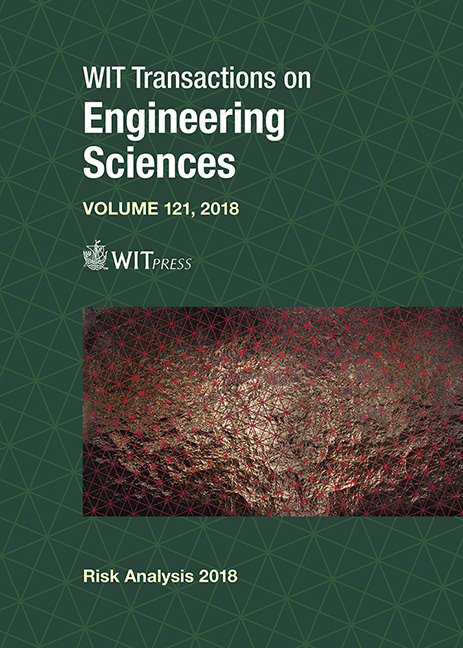HOW CREDIBLE IS MY HAZARD MAP? DISSECTING A PREDICTION PATTERN OF LANDSLIDE SUSCEPTIBILITY
Price
Free (open access)
Transaction
Volume
121
Pages
17
Page Range
3 - 19
Published
2018
Paper DOI
10.2495/RISK180011
Copyright
WIT Press
Author(s)
ANDREA G. FABBRI, CHANG-JO CHUNG
Abstract
A hazard map is to represent the likelihood of future occurrences of hazardous events. Predicting the future, however, is far from easy and prone to uncertainty, misunderstanding and suspicion. This contribution presents a landslide-susceptibility prediction pattern that resembles a map but is a complex construction resulting from modelling and assumptions imposed on historical data. A mathematical model of spatial relationships, based on fuzzy sets, is applied to a spatial database that was constructed for landslide susceptibility studies in northern Italy. The resulting prediction pattern is dissected into its basic components to bring up the implied elements of spatial characterization, relevance of thematic input, assumptions in models and data, and visualization/interpretation of predicted scores. By the term prediction pattern we indicate the result of the classification of the study area into levels of relative susceptibility. Of particular relevance within the study area is the uncertainty associated with the scores, i.e., the ranks that classify the zones that are relatively more susceptible. Such a dissection is to lead to a confirmation of the credibility of the prediction pattern (hazard map?) based on the confidence gained by the comprehension of all elements integrated and assumptions made in its construction.
Keywords
prediction pattern, landslide susceptibility, hazard map, uncertainty of ranks, modelling assumptions





